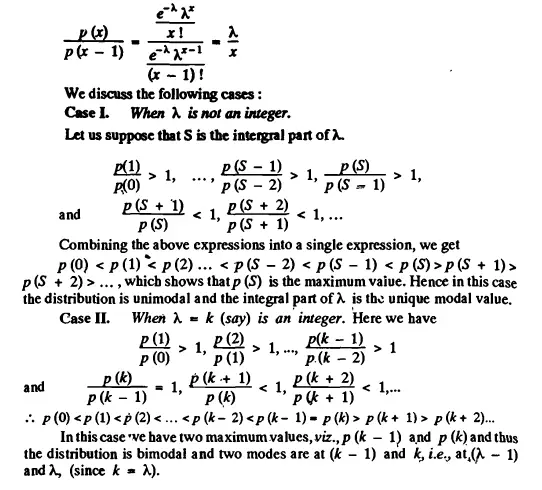Poisson distribution was derived in 1837 by a French mathematician Simeon D. Poisson (1781-1840). The probability distribution function of the Poisson distribution is given as,
P(X=x) = e-mmx/x! where x=0, 1, 2,……
Poisson distribution is a discrete probability distribution since the variable X can take only integral values. If we know m, all the probabilities of the Poisson distribution can be obtained.
Hence m is called the parameter of the Poisson distribution. The mean and variance of the Poisson distribution are both equal to the value of the parameter m.
How to Find the Mode of the Poisson Distribution?
The Poisson distribution has a mode at X = r if p(r) > p(r – 1) \text{ and } p(r) > p(r + 1). Let X be a Poisson variate with parameter m.
Case 1: When m is an integer
If m is an integer, equal to k, (say), then the Poisson distribution is bimodal. The two modes are at the points X = k and X = k – 1.
Example: Suppose m = 9. Since the mean is an integer the distribution is bimodal.
Hence, in this case, the distribution is bi-modal, the two modal values being 9 and 9 – 1 = 8.
Case 2: When m is not an integer
If m is not an integer, then the distribution is unimodal, the unique modal value being the integral part of m. This means that the mode is equal to the greatest integer less than m.
Example: If m=4.6, then the mode of the distribution is equal to 4, which is the integral part of m.
Hence the distribution is unimodal and Mode = 4, the integral part of 4·8.
Proof for Mode of the Poisson Distribution:
Let p(x) be the probability mass function of the Poisson distribution as above. We compute the ratio p(x)/p(x-1) which helps us to decide the value of x at which the p.m.f attains the maximum value.
This analysis is done by dividing the situation into two cases as shown below.
